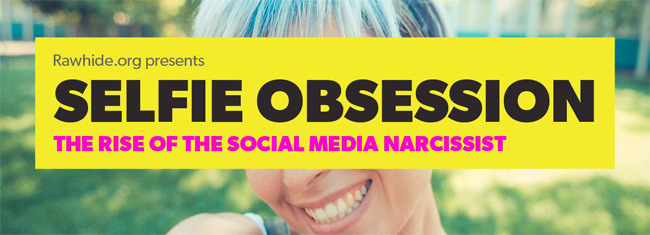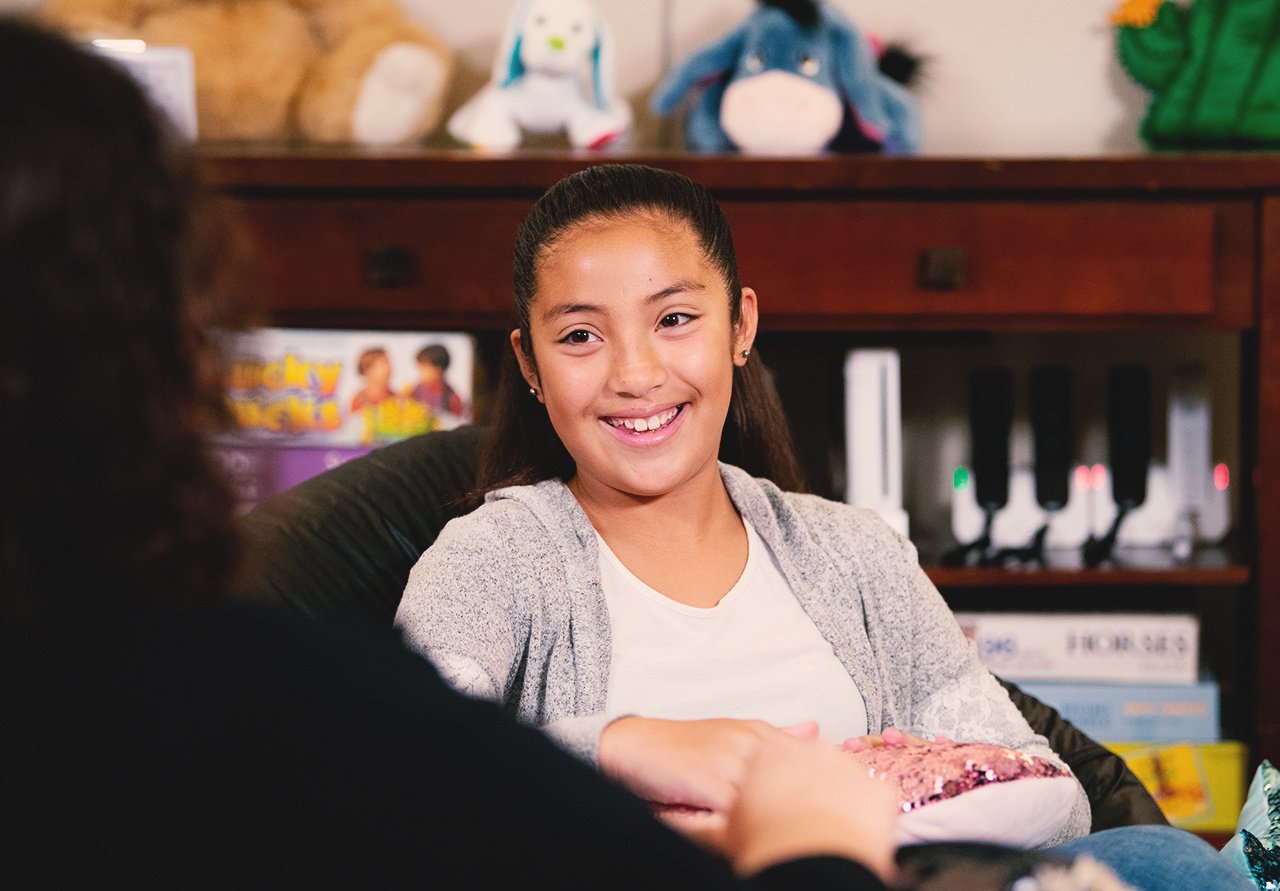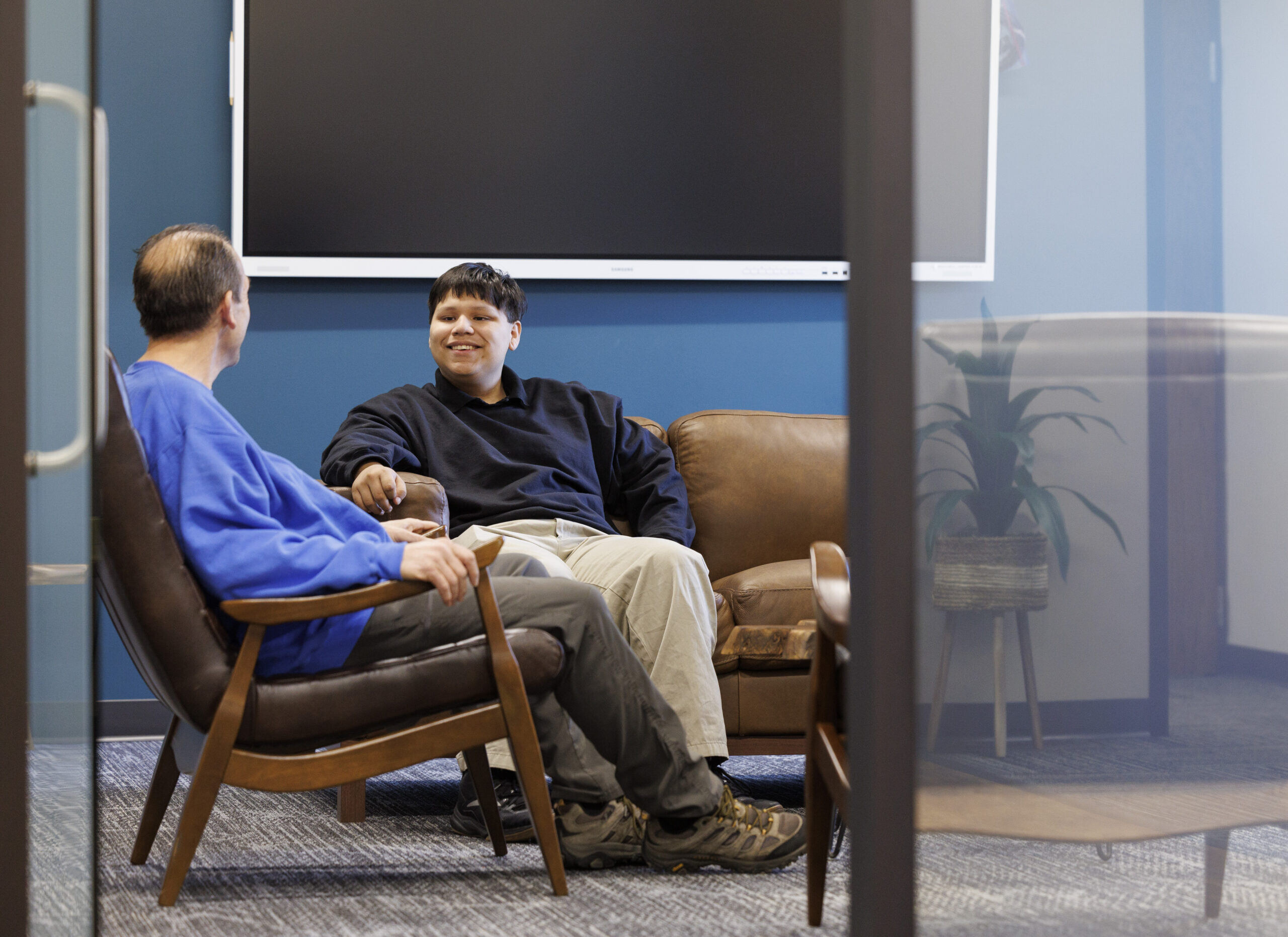
Remember a time when “selfies” didn’t exist? The newly coined term has become a popular teen obsession that is time-consuming and may lead to mental health issues. Psychologists have noticed a rise in narcissistic personality traits, insecurity, self-objectification, addiction, damaged friendships, body dysmorphic disorder, and depression that coincide with the increase of selfies. Selfies may seem innocent in moderation, but overindulgence may lead to social media narcissism and other mental health issues.
What is Narcissism?
The word narcissism comes from a Greek fable about a handsome young man, named Narcissus, who fell in love with his own reflection in a pool of water.
Narcissism is defined as a long-standing preoccupation with one’s self creating an overwhelming need for admiration. Common characteristics of narcissists are:
- Extreme self-centeredness and a grandiose view of oneself
- Excessive need for admiration and attention
- Unreasonable expectations of favoritism
- Arrogant behaviors or attitudes
- Fantasies revolving around personal success and attractiveness
Narcissists will also lack empathy for others and have a strong desire to look down on others with scorn or find pleasure in depriving or hurting others. While narcissistic tendencies may seem apparent, narcissists are often difficult to identify.
How Do Selfies Create Narcissistic Behavior?
Selfies can create an increased preoccupation with “self” just like the man in the Greek fable who fell in love with his own reflection. Many studies suggest that social media encourages blatant self-promotion and creates an obsession with physical appearance.
How we see ourselves does not come from who we really are, but rather from how we believe others see us.
– Charles Horton Cooley, American sociologist
The “Looking Glass-Self Theory,” espoused by American sociologist Charles Horton Cooley, relates to this selfie obsession and consists of three segments:
- Imagining how we appear to others
- Imagining what judgments others make based on our appearance
- Imagining how others feel based on the judgments made of us
Taking and posting many selfies triggers self-indulgent and attention seeking behaviors that fall on the spectrum of narcissism and allows teenagers to relish in the attention their pictures receive on social media.
More Connected Means More Selfies
“Now that we can interact with hundreds — no, thousands — of people simultaneously, we’ve strengthened the impact that others have on our self-value.”-Dr. Letamendi
Selfies are easy to take and even easier to share. 55% of “Millennials” have taken a selfie and shared it on social media; almost double that of the next closest generation. Teens that have social media accounts are more likely to share their selfies with their friends and followers.
Technological advances can be credited for the rise of the selfie culture. The first use of the hashtag “selfie” (#selfie) appeared on Flickr in 2004, but the trend exploded when Apple released the iPhone 4 in 2010. The iPhone 4 was the first mainstream phone with a front-facing camera, making selfies extremely easy to do. Products like “the selfie stick” appeared on the market shortly after. By 2013, “selfie” was the word of the year.
Selfies helped image-based social media sites like Instagram and Snapchat become popular.
- Instagram has 1,000 selfies posted every ten seconds
- 74% of all images shared on Snapchat are selfies
Why So Many Selfies?
Responses to selfies are immediate, and whether comments are positive, negative, personal, or anonymous—the attention creates a desire for more. Receiving notifications over social media actually releases dopamine, the chemical associated with reward and motivation response, throughout the brain.
- 93 million selfies are taken each day,
- Equaling approximately 2,583,333 rolls of film devoted to selfies… every day!
- 95% of teens have taken a selfie
- 30% of all pictures taken by individuals aged 18-24 are selfies.
- Young adults spend roughly 54 hours a year taking selfies.
- That’s nearly 7 full work days a year devoted to selfies!
Selfies are being snapped and shared at such a high rate because the responses meet a basic human need to be noticed, appreciated, and recognized. As more selfies are shared and more attention is generated, teens develop a need for even more attention and desire more approval from their peers. The chain reaction causes even more selfies for even more attention and can lead to social media narcissism.
Current Trends in Selfie Culture
Where do these selfies end up?
- 48% of selfies are shared on Facebook
- 13% of selfies are shared on WhatsApp
- 9% of selfies are shared on Twitter
- 8% of selfies are shared on Instagram
- 5% of selfies are shared on Snapchat
Almost 300 million Instagram photos contain the tag “selfie,” but the most popular selfie trends are:
- Adventure — 14,949,000+ posts shared to Instagram – meaning = the great outdoors
- Duckface — 4,027,000+ posts shared to Instagram – meaning = pursed lips to accentuate the cheeks
- Beach Brag — 2,675,000+ posts shared to Instagram – meaning = at the beach or on vacation
- #IWokeUpLikeThis — 1,351,000+ posts shared on Instagram – meaning = messy, yet still pretty
- Car Selfie — 894,000+ posts shared on Instagram – meaning = taking selfies while driving
- Ussie — 78,000+ posts using this phrase shared on Instagram – meaning = a buddy or group selfie
- Healthie — 18,000+ posts shared to Instagram using #Healthie – meaning = at the gym or eating healthy
Disregard for Safety in Quest for Ultimate Selfie
While the trends above seem innocent, dangerous selfie trends are become popular. The United States Forest Service officials in Lake Tahoe have issued numerous warnings about taking selfies with wild bears. Daredevils are also making headlines by climbing to the top of skyscrapers to take their selfies. Risky selfies have consequences and are taking their toll. More people have died from taking selfies than from shark attacks during 2015.
Appearance Is Everything
Selfies are not always an accurate representation of a person. An estimated 36% of selfies are digitally altered or enhanced. The most retouched areas of selfies are:
- 33% retouch skin blemishes
- 16% retouch face shape
- 15% retouch skin tone
- 5% retouch lips and mouth area
Editing and manipulating photos is more convenient than ever. Instagram features 22 filters and a variety of photo editing tools; Twitter has 8 filters and Facebook has 6.
The extra effort to tweak selfies often attracts the desired attention as selfies featuring a person’s face are 38% more likely to be liked and 32% more likely to attract comments and photos with filters are 21% more likely to be viewed and 45% more likely to be commented on.
When teens gain attention from their edited selfies, they begin experiencing the “looking glass self-theory” and wonder what their ideal appearance is to others, what judgments others are making, and how others feel about them. As they search for reassurance and attention, they continue self-indulgent behaviors such as posting numerous selfies to social media.
When Simply Sharing Becomes an Unhealthy Selfie Addiction
Many people value physical appearance on social media. This fosters narcissistic behaviors like:
- Insecurity/Lack of Self Confidence
- Self-Objectification
- Addiction
- Damaged Friendships/Relationships
- Body Dysmorphic Disorder
- Depression
Danny Bowman represents the dangers of selfie addiction. Danny became so obsessed with taking the perfect selfie that he spent 10 hours a day taking 200 photos of himself. He wasn’t happy with any of his selfies, became depressed, and attempted to take his life.
Doctor David Veale noticed a correlation between Body Dysmorphic Disorder and selfies: “Two out of three patients who come to see me with Body Dysmorphic Disorder since the rise of camera phones have a compulsion to repeatedly take and post selfies on social media sites.”
Teens taking excessive selfies can alienate their friends by displaying a self-centered mentality. Selfies can also cause teens to focus on an aspect they may feel is flawed.
Pamela Rutledge, director of the Media Psychology Research Center sheds light on the issue: “Selfies frequently trigger perceptions of self-indulgence or attention-seeking social dependence that raises the damned-if-you-do and damned-if-you-don’t specter of either narcissism or very low self-esteem.”
7 Ways to Identify Social Media Narcissism
Social media narcissism may be displayed through many of the following traits:
- Constantly Updating Their Profile Picture: A social media narcissist changes their profile picture often. They will stick with photos that maximize the chance of gaining admiration rather than ones that illustrate a close relationship.
- Obsessive Checking of Social Media Accounts: Social media narcissists may check their accounts 60-100 times a day. They don’t want to miss any comments or mentions.
- Oversharing: Social media narcissists will share purely self-promotional posts such as photos and videos that provide little value to their friends but satisfy their desire for more likes.
- Updating Friends and Followers on Every Little Thing: Social media narcissists will share many posts that “self-promote.” They will fill other user’s timelines with self-indulgent boasting and bragging.
- Over-Friending: A social media narcissist will have lots of friends and followers. Many of the friends and followers they have never met, spoken to, or don’t know very well. The goal is to have a high number of friends and followers, with little interest in making real friends.
- Seek Support: Social media narcissists will find comfort in their own social media feeds when they have a bad day. They will look back at their timelines and take comfort in their self-perceived awesome life.
- Easy to Anger: A social media narcissist may display significant anger from comments or general disagreement. They may be prone to making a public spectacle when they’ve been angered by publicly shaming someone they disagree with.
How Parents Can Help Teens’ Narcissistic Trends
While schools may teach teens about cyberbullying and online predators, it’s important for parents to educate their teens on the mental dangers of selfies and social media addiction. If your teen is displaying narcissistic personality traits, the “3 Rs of Selfie Control” can help.
- Reduce – Limit the amount of time your teen spends on the internet. Try to spend more time interacting offline and learn to appreciate people for who they are; not the content they share or how they look.
- Rethink – Ask your teen what they are using social media for. Remind them that the purpose of social media is socializing; not self-promotion.
- Reflect – Ask your teen what content they are sharing. Are they sharing content to serve self-interests or are they sharing content to socialize?
Dr. Michele Borba has four additional tips for parents who feel their teen is exhibiting narcissistic behaviors:
- Refocus Praise – Stress your child’s inner qualities such as kindness, cooperation, and selflessness. This helps children become aware of how important the feelings of others are.
- Lower the Curtain – Reconsider where you place focus when your teen is performing a group or team activity. If you are focusing your praise solely on your teen, consider emphasizing your teen’s teammates as well.
- Nurture Empathy – Point out other people’s feelings by asking “How do you think they feel?” This encourages teens to be more considerate.
- Boost Face-To-Face Interaction – Hold family dinners without cell phones. Encourage family time where the family is unplugged. Boosting face to face interaction helps teenagers see beyond themselves.
In moderation, selfies and social media can be positive tools for self-expression. Social media can encourage healthy communication and allow teens to share passions and figure out who they are. Alice Marwick, co-director of Fordham University’s McGannon Center for Communication Research said “Teens use the internet to experiment with things. They try on identities, they posture, and they perform. And many of those things, when parents take them out of context, may seem problematic, but when you actually see what the young person is doing, they’re experimenting with an identity, which is a very typical and healthy part of adolescent development.”
Monitor your teen’s social media use and self-indulgent behavior. If you see something inappropriate or cruel, communicate that that behavior will not be accepted. If you feel they are displaying selfish and narcissistic tendencies, have them follow the three Rs and try out Dr. Borba’s methods to help break their selfish and narcissistic trends and teach them empathy and consideration towards others.










